Unlock standardized and improved financial data points from Brazil's open finance network with Belvo's Open Finance Data Aggregation product for Brazil, enabling richer insights and enhanced financial applications.
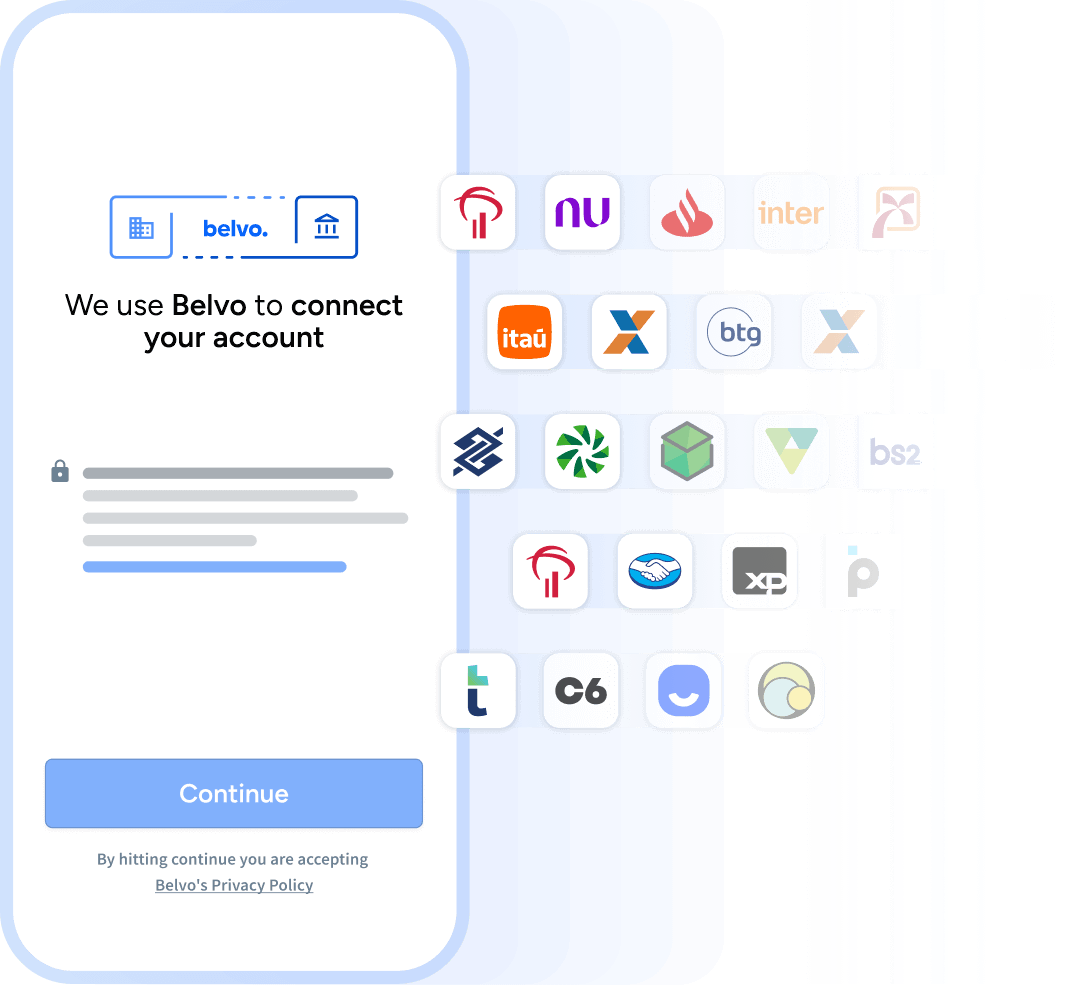
Our Banking Aggregation (Brazil) product provides access to the following resources:
Information regarding the owner of the bank account, such as their name, contact information, identity documents, and more. For a detailed breakdown of all the fields that are available for this resource, check our API reference or data dictionaries.
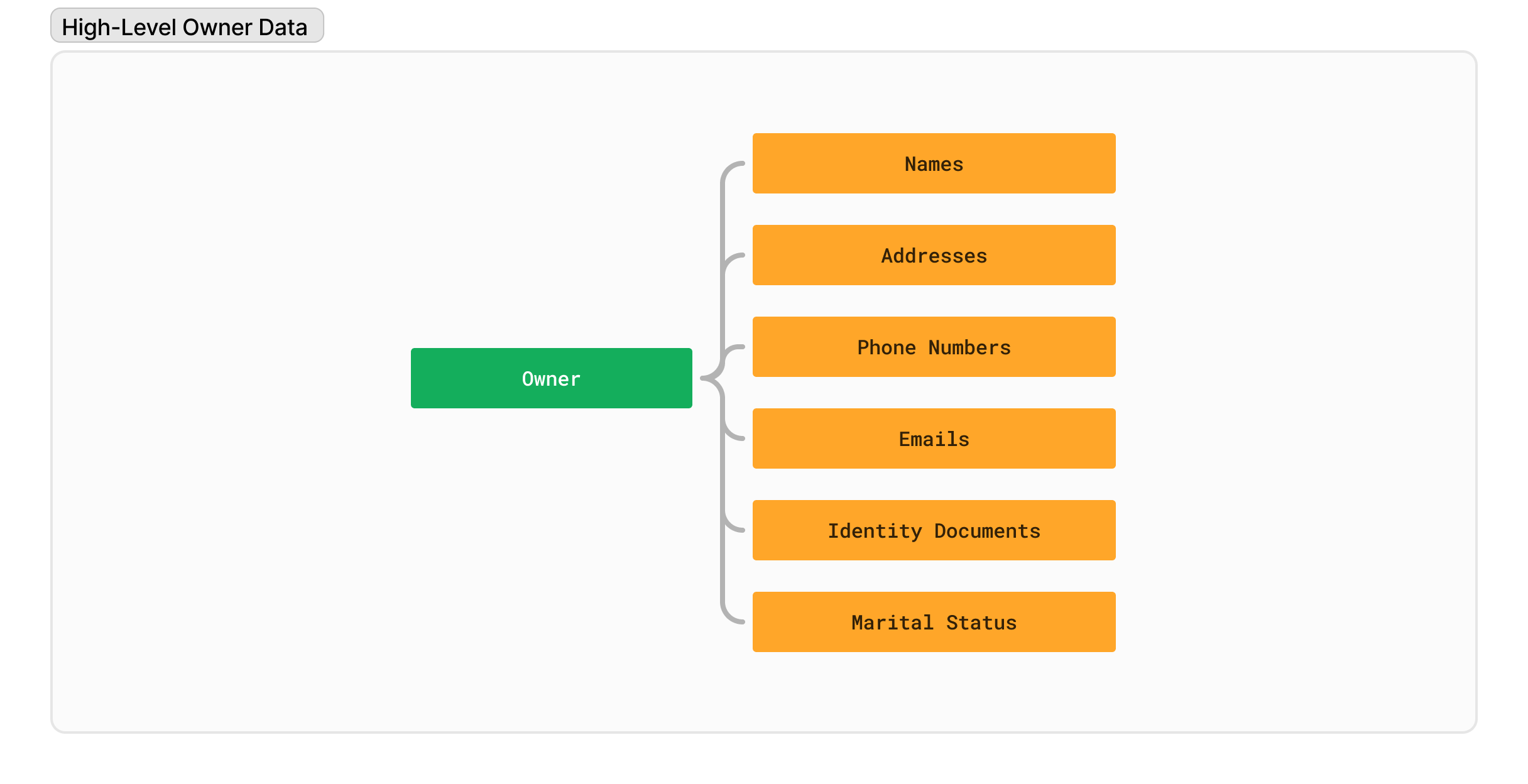
Information regarding the accounts the user has at a given institution, along with balance, overdraft, loan, and credit card information. For a detailed breakdown of all the fields that are available for this resource, check our API reference or data dictionaries.

Transactional information, including the transaction date, value, description, and much more. For a detailed breakdown of all the fields that are available for this resource, check our API reference or data dictionaries.
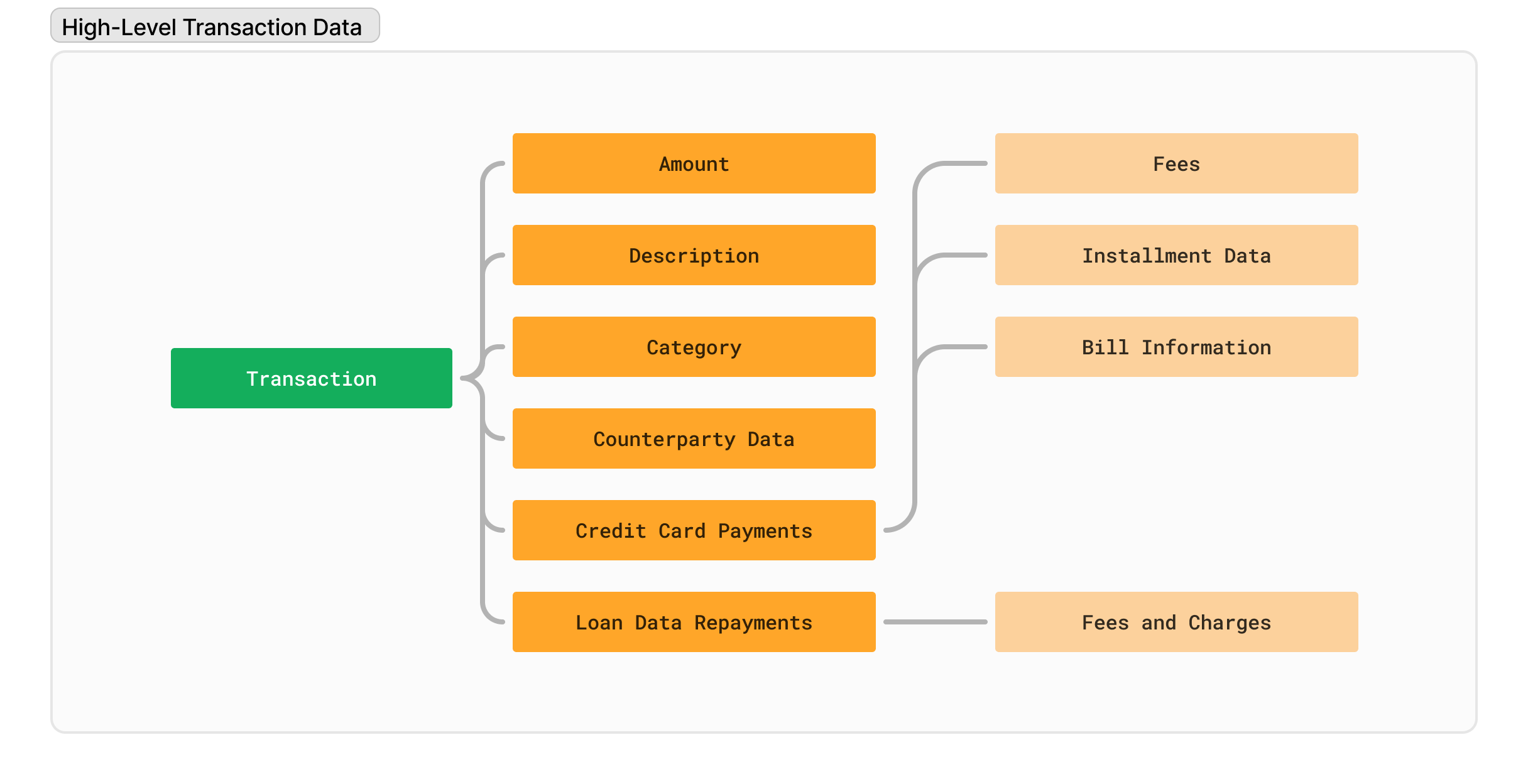
For each credit card account that the user has, you can also extract the credit card bill information on a monthly basis. For a detailed breakdown of all the fields that are available for this resource, check our API reference or data dictionaries.
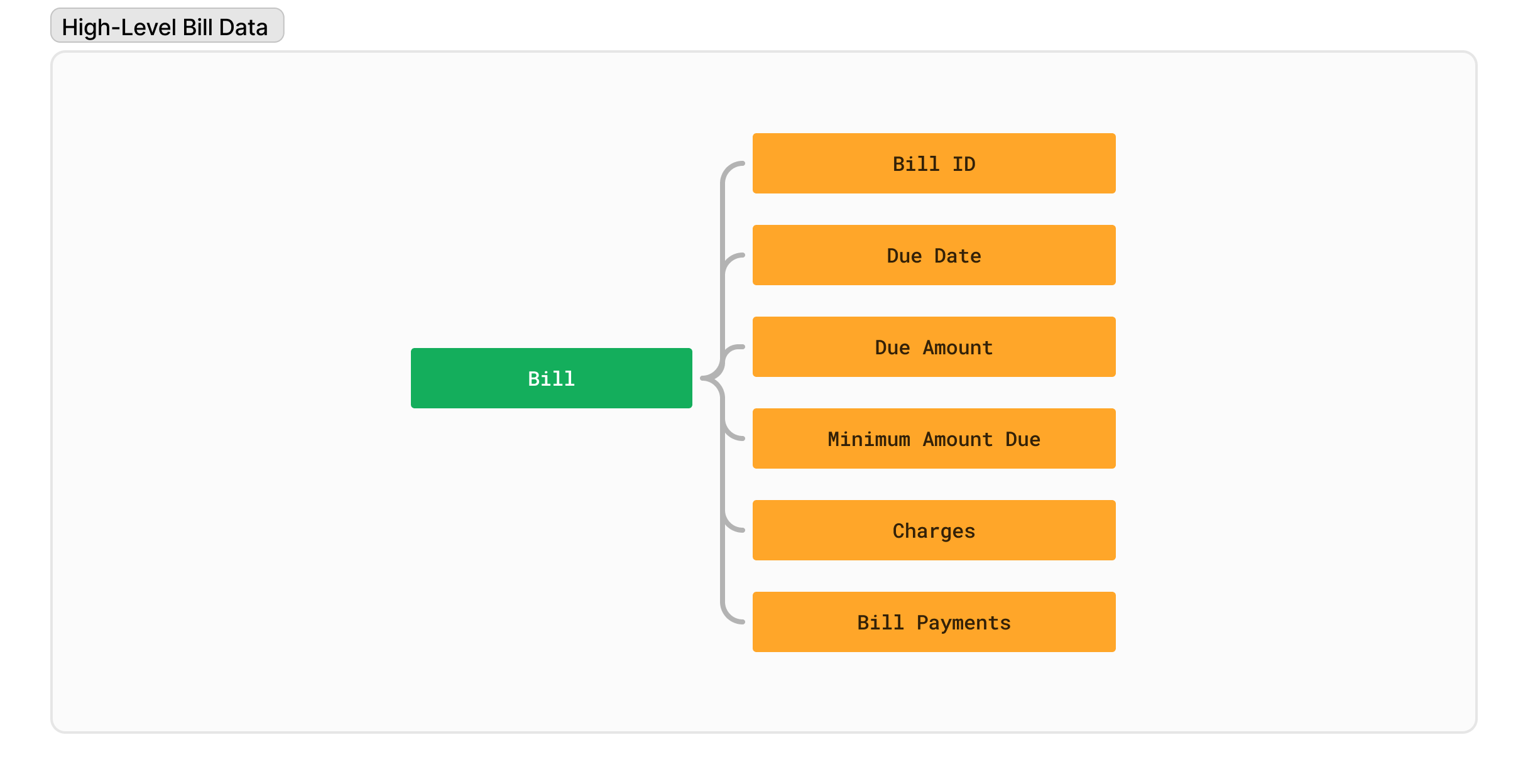
High-level balance details for an account, including the account identifier and a breakdown of available, blocked, and automatically invested amounts. For a detailed breakdown of all the fields that are available for this resource, check our API reference or data dictionaries.

Portfolio position information such as product type, ISIN, product name, balance, remuneration, issue price, as well as valuation and rate details. For a detailed breakdown of all the fields that are available for this resource, check our API reference or data dictionaries.
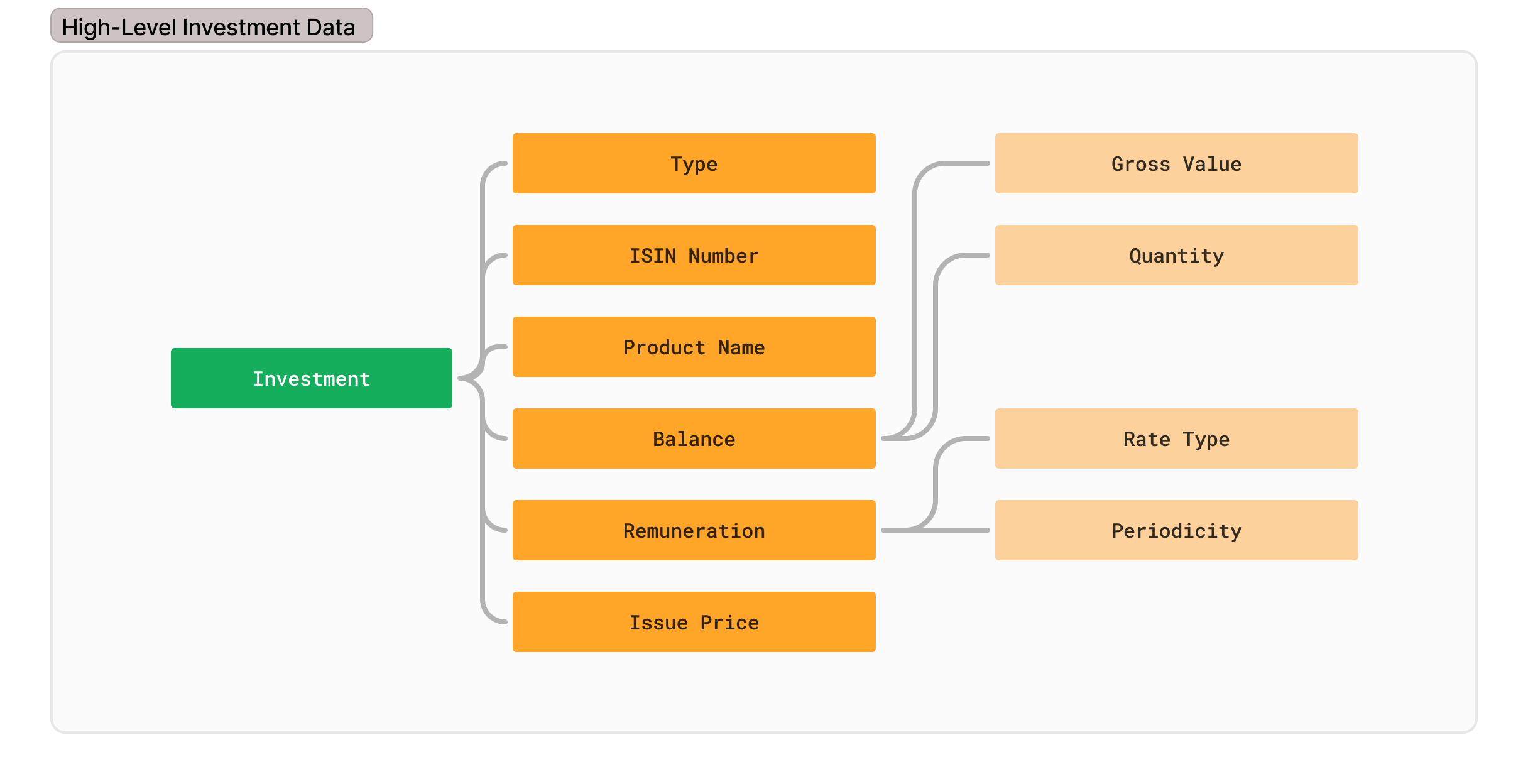
Details of investment buy/sell operations, including the related instrument, gross and net values, quantity, and broker note details. For a detailed breakdown of all the fields that are available for this resource, check our API reference or data dictionaries.

For a comprehensive list of all financial institutions available through Belvo's Open Finance Data Aggregation in Brazil, please see our dedicated Banking Aggregation (Brazil OFDA) Institutions page.
In OFDA, the concepts of consent and link are very important:
- A consent represents your user's agreement to share their Open Finance data from a given institution with your application. This term is standardized within Brazil's Open Finance Network. Only users can manage their consents, meaning they are the ones who can renew or revoke this permission.
- A link is Belvo's internal representation of a user. After a user provides their consent, Belvo creates a link, which you can use to access the user's data.
For each consent that is established, a corresponding link is created, resulting in a one-to-one relationship. While only the user can manage their consent (for example, to renew or revoke it), you have the ability to delete the link.
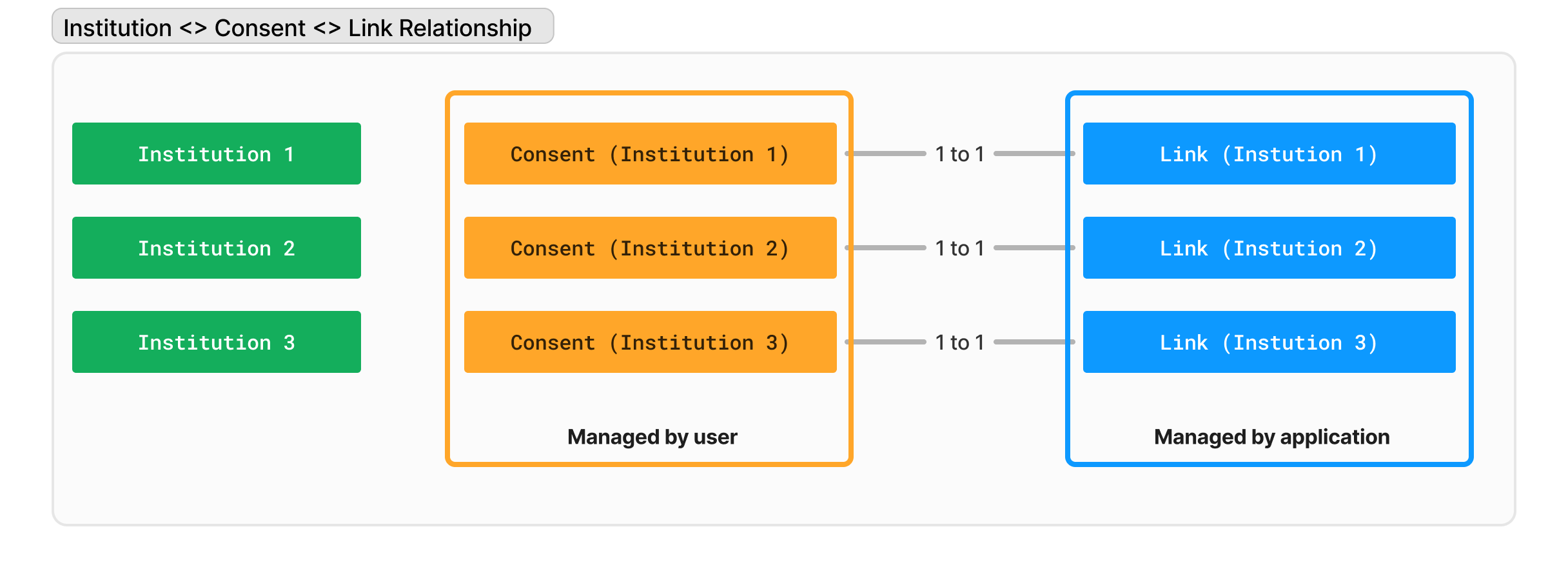
When you delete a link (and all the associated data from Belvo's system), Belvo automatically revokes the associated consent and permanently disconnects the link from the consent. This action is irreversible, meaning that the connection between the user's data and your application is permanently severed. For instance, if a user decides to stop using your application and you delete their link as part of the offboarding process, all data associated with that user will be removed from Belvo and their consent will be automatically revoked. However, the original consent remains intact and the user must revoke it themselves using the My Belvo Portal.

If your user decides to return to your application, they will need to grant their consent again, leading to the creation of a new link.
To get consent from your user to access their data, they need to provide this in their institution. Belvo has created an Open-Finance compliant widget that you can easily add within your application that will guide your user in the consent-granting process.
In the diagram below, you can see a high-level flow of how Belvo should be used in your application:

- Inside your application, prompt your user to connect their bank account.
Note: Your application will need to have received the user's CPF (or CNPJ) and full name for the consent granting purpose. - Using their provided data, start the Belvo Hosted Widget inside your application.
The Belvo Hosted Widget guides your user through all the steps to grant your application consent to access their data. This includes: choosing the institution they want to give you access to read data from, what information they will share with your application, redirecting to their institution to confirm the data sharing, and finally, redirecting back to the widget in your application. - User grants consent within their institution.
After the user grants their consent in their institution, they are redirected back to the Belvo Hosted Widget. - User redirected to your application
In the widget, the user clicks Finalize and are redirected to a given page within your application.
As soon as your user grants their consent and a link is created, Belvo automatically retrieves the last 12 months of Account, Owner, Transaction, and Credit Card Bill information for the user.
For details on how to set up the hosted widget within your application to get user consent to access their data, see our dedicated Extract Banking Data in Brazil (API with Hosted Widget) guide.
To extract banking data in Brazil using the Open Finance Network, you can use the following integration options:
Retrieval Limits
Integrating with Brazil's Open Finance network involves understanding the frequency at which you can retrieve user data due to network limitations, as well as the crucial aspect of managing user consents. For detailed information on these topics, please refer to our dedicated articles on Understanding Data Retrieval Limits in Brazil OFDA and Managing User Consents in Brazil OFDA.
Regulatory Requirements
According to Open Finance regulations, your users must have an easy-to-access way of managing their consents within your application or website. Belvo has created the My Belvo Portal (MBP) that allows users to manage their consents in a simple and straightforward way, meeting all the requirements of the regulations.
The MBP can be set up in three different ways:
- Public MBP
On Belvo's website, we host a universal instance of the MBP that any user can use to manage their consents. This instance consolidates all the consents they have granted using Belvo's OFDA product. You simply need to redirect your user tohttps://meuportal.belvo.com/?mode=landing, where they can input their details. Your user will be able to see all the consents they've granted using Belvo (including other applications using Belvo to extract data from Brazil's Open Finance Network). - Customized MBP
You can customize the MBP to display only the consents that your user has granted your application, making it easier for them to manage the consents. - Consent Renewal Mode
The MBP can also be used to renew an expired consent. Belvo will send you a webhook when one of your user's consent's has expired.
For mobile-native and web-based applications, we've created a hosted version of our widget that significantly simplifies your development and integration process. All it requires is for you to create a webview in your application and some knowledge of handling deeplink redirects.